Volume 22, Issue 3
Displaying 1-12 of 12 articles from this issue
- |<
- <
- 1
- >
- >|
Current topics
-
2002 Volume 22 Issue 3 Pages 175-182
Published: 2002
Released on J-STAGE: April 25, 2006
Download PDF (983K)
Symposium
-
2002 Volume 22 Issue 3 Pages 183-184
Published: 2002
Released on J-STAGE: April 25, 2006
Download PDF (421K) -
2002 Volume 22 Issue 3 Pages 185-193
Published: 2002
Released on J-STAGE: April 25, 2006
Download PDF (1386K) -
2002 Volume 22 Issue 3 Pages 194-199
Published: 2002
Released on J-STAGE: April 25, 2006
Download PDF (1052K) -
2002 Volume 22 Issue 3 Pages 200-205
Published: 2002
Released on J-STAGE: April 25, 2006
Download PDF (877K) -
2002 Volume 22 Issue 3 Pages 206-214
Published: 2002
Released on J-STAGE: April 25, 2006
Download PDF (1343K)
Seminar
-
2002 Volume 22 Issue 3 Pages 215-220
Published: 2002
Released on J-STAGE: April 25, 2006
Download PDF (1053K) -
2002 Volume 22 Issue 3 Pages 221-224
Published: 2002
Released on J-STAGE: April 25, 2006
Download PDF (607K) -
2002 Volume 22 Issue 3 Pages 225-231
Published: 2002
Released on J-STAGE: April 25, 2006
Download PDF (1188K) -
2002 Volume 22 Issue 3 Pages 232-236
Published: 2002
Released on J-STAGE: April 25, 2006
Download PDF (734K) -
2002 Volume 22 Issue 3 Pages 237-240
Published: 2002
Released on J-STAGE: April 25, 2006
Download PDF (657K)
Report on national survey of aphasia
-
2002 Volume 22 Issue 3 Pages 241-256
Published: 2002
Released on J-STAGE: April 26, 2006
Download PDF (1848K)
- |<
- <
- 1
- >
- >|
